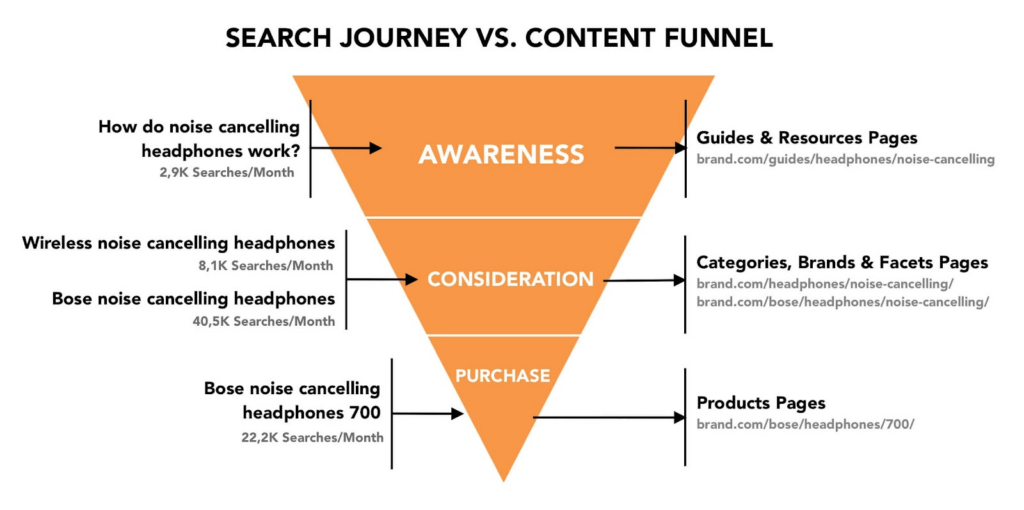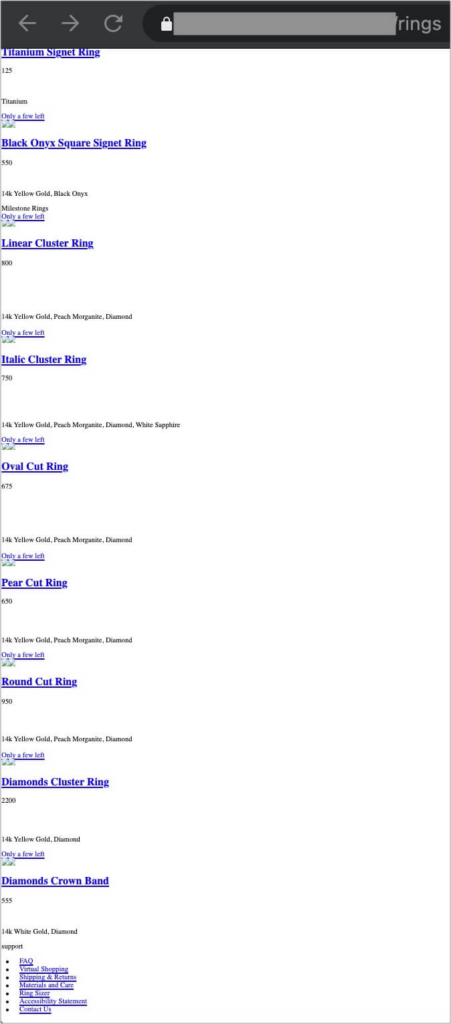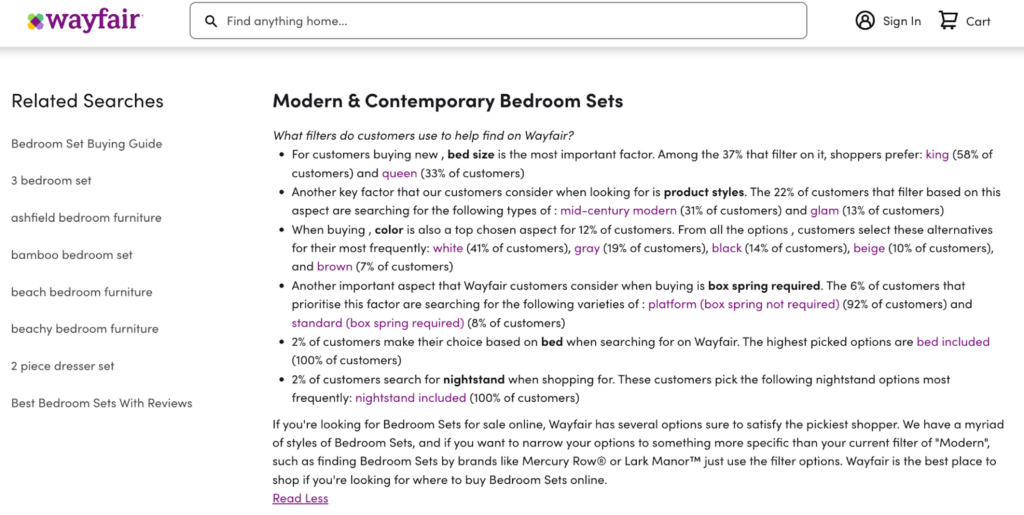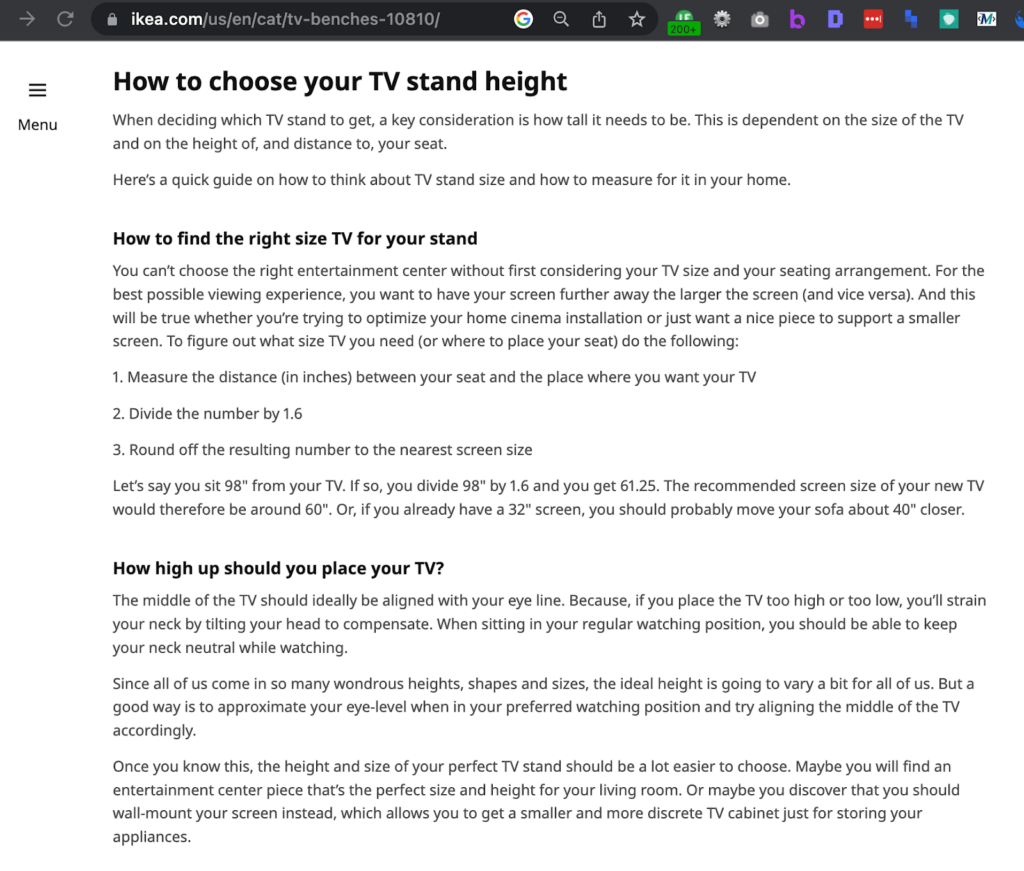
About the author
Aleyda Solis is an SEO consultant and founder of Orainti -a boutique SEO consultancy-, speaker and author. She shares the latest news and resources in SEO in the #SEOFOMO newsletter and Digital Marketing in #MarketingFOMO, SEO tips in the Crawling Mondays video series, and a free SEO Learning Roadmap called LearningSEO.io.
European Search Personality of 2018, she’s also co-founder of Remoters.net, a remote work hub, featuring a free remote job board, tools, guides, and more to empower remote work.
Why are PLPs so important in Ecommerce sites?
For many ecommerce sites, their product listings pages (PLPs) -categories, sub-categories, facets-, tend to target some of the most popular and commercially driven queries that can bring a high number of visits from users that are already in the consideration stage of the customer journey, and are therefore critical to optimize for both searchability and conversion.

Why are PLPs challenging to optimize?
However, there’s an on-going challenge to rank with e-commerce PLPs content:
- They target highly competitive queries
These pages tend to target very valuable commercially oriented queries that many times have an important search competition, and therefore, they need to be highly relevant and comprehensive, well linked and authoritative to be able to compete for their targeted queries. - Their commercial nature is critical to conversion
These pages’ goals are to facilitate the journey of the users to easily identify and click on the product they’re looking to buy to complete the transaction in the product page. So they tend to have a minimalist design that facilitate conversion, showcasing a list of products many times only showing their name and links, with very little or no additional content.
You’ll frequently find resistance to implement any change on these pages due to their critical role towards conversion, and when it happens, they will tend to include the informative content at the bottom to avoid harming conversions. The issue is that this content in many cases is also not really aligned with the “commercial” nature of the page. - The scale of their optimization
There are thousands of PLPs in ecommerce sites, and optimization efforts need to be done at scale for all of those targeting queries with worthy search volume that compensates the effort.
How can you identify these content optimization issues with your PLPs?
Our PLPs design can be deceiving when analyzing their content, as it might seem that they’re featuring plenty of information but, are they really? I recommend to visit them while disabling images and CSS from your browser — for which you can use an extension, like Chrome’s Web Developer one — to see the actual text information they’re showing.
You might be surprised to see then how little actual text content is shown in many cases, and how many of these pages are just showing a list of links to their products, with little else.

To assess if your PLPs are affected due to their lack of relevant content you can select those that are not yet ranking in top positions for their targeted non-branded, commercial queries and compare their content versus the one of the PLPs outranking them, by asking the following questions:
- How many products are featured per page?
- How much information is featured per product? (Title, short description, main characteristics, etc.)
- Is there are an overall PLP description for the products? How insightful, useful and comprehensive it is?
- Is there an FAQ section addressing the most common doubts about the featured products? How descriptive, useful and comprehensive it is?
- What’s the content topic relevance towards the targeted queries? You can assess it with content optimization tools like Frase, Marketmuse or Clearscope.
If you find your poorly ranking PLPs falling behind versus other sites’ PLPs when asking these questions comparing their content status, their lack of content relevance might be one of the reasons why they don’t rank better (although remember that there might be others too), and it would be important to improve it, closing the existing gap.
How to avoid or fix content optimization in PLPs?
Let’s see how to improve your PLPs content relevance versus your competitors, while featuring information that is aligned with the intent of the user at that stage of the journey.
But first, to ensure the commercial alignment, when optimizing this content, I ask you to think of it as the information that a salesperson would provide when a customer is already going through products of a certain type at a store aisle.
This information should:
- Confirm to the customer what the products they’re looking at are the best at (and what they’re not)
- Clarify any doubts or concerns regarding the products’ shared characteristics and usage
- Inform why they’re at the best place to buy these types of products, even if they might be sold elsewhere
Let’s go through 3 different ways to achieve this at scale:
1. Including more products with more comprehensive descriptions
Showing more products with more comprehensive descriptions “previews” is the most straightforward way to expand your content at scale across all of your PLPs, while aligning with their commercial purpose.
How many products should you feature? As many as you can that don’t hurt your page’s speed and conversions. It would be then important to run AB tests to assess the impact on conversion and monitor the page’s speed metrics when executing this.

2. Featuring a description that informs the customer where they are
Include a description that helps the user to understand if they’re in the right place by describing the types of products featured in the page, introducing these products characteristics and sub-types by mentioning (and linking) to children categories or facets.
A simple, yet effective way to do it while helping your users is leveraging your products’ filter usage and buying stats by showcasing insights regarding the characteristics that are commonly used or bought by those products’ customers. If you don’t have that type of data yet, you can also leverage keyword tools to identify which are the most popular characteristics variations used when searching for those products, and highlight them accordingly.

You can also now create different variations of this content more easily, while enriching it with real insights and stats from your site by leveraging content tools AI functionalities — like the ones provided by Frase or Writesonic — while making sure that it’s edited and validated by your specialized copywriting team members to ensure that it is factual, unique and helpful.
3. Addressing the Most Common Doubts with an FAQ section
Talk with your customer support team, take a look at your Website internal search analytics and look for the top questions searched in keywords tools like Semrush or AlsoAsked about each type of product. Pick the most popular and relevant ones and answer these questions through an FAQ section in your PLPs.

This won’t only help to improve these pages relevance but also to clarify common doubts and eliminate objections about the products and brands, and therefore improve conversions.
You can also leverage the FAQPage structured data to tag the questions and answers and expand your page snippets in search results when applicable.
It’s time to start optimizing your PLPs
I hope that with the previous criteria and steps you can now analyze potential content relevance issues across your PLPs and start closing the existing content optimization gap while connecting with users commercial search intent and helping these pages to fulfill their conversion role, starting with those that have a higher potential faster.

About the author
Aleyda Solis is an SEO consultant and founder of Orainti -a boutique SEO consultancy-, speaker and author. She shares the latest news and resources in SEO in the #SEOFOMO newsletter and Digital Marketing in #MarketingFOMO, SEO tips in the Crawling Mondays video series, and a free SEO Learning Roadmap called LearningSEO.io.
European Search Personality of 2018, she’s also co-founder of Remoters.net, a remote work hub, featuring a free remote job board, tools, guides, and more to empower remote work.